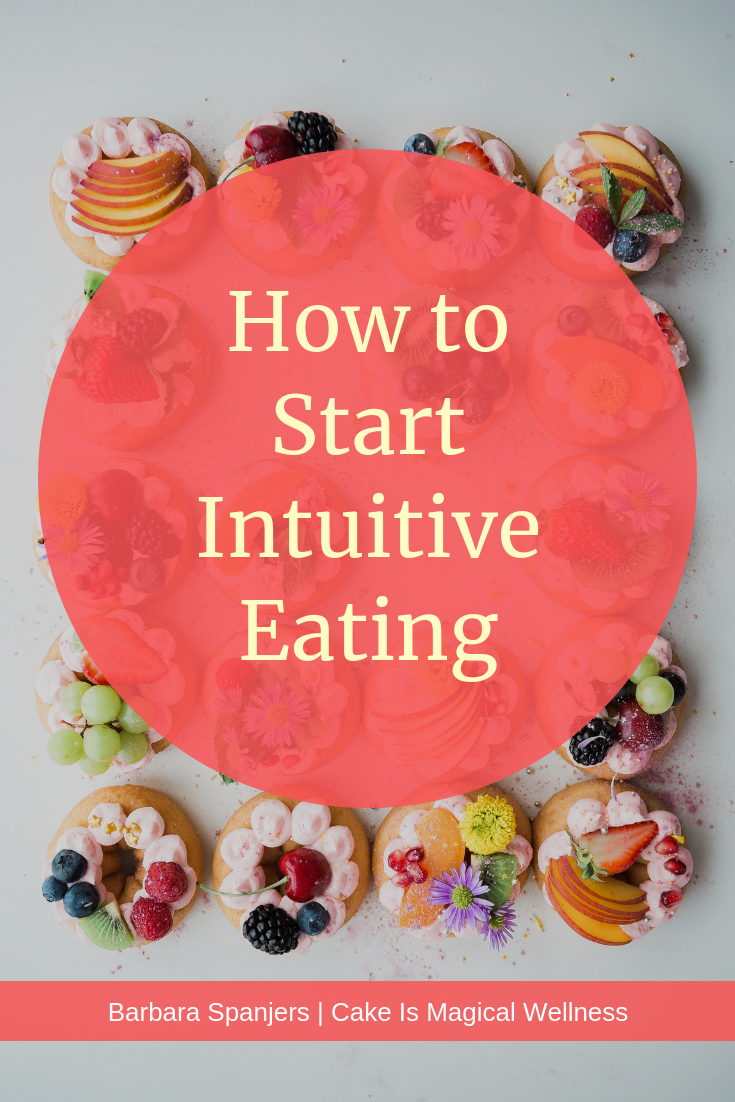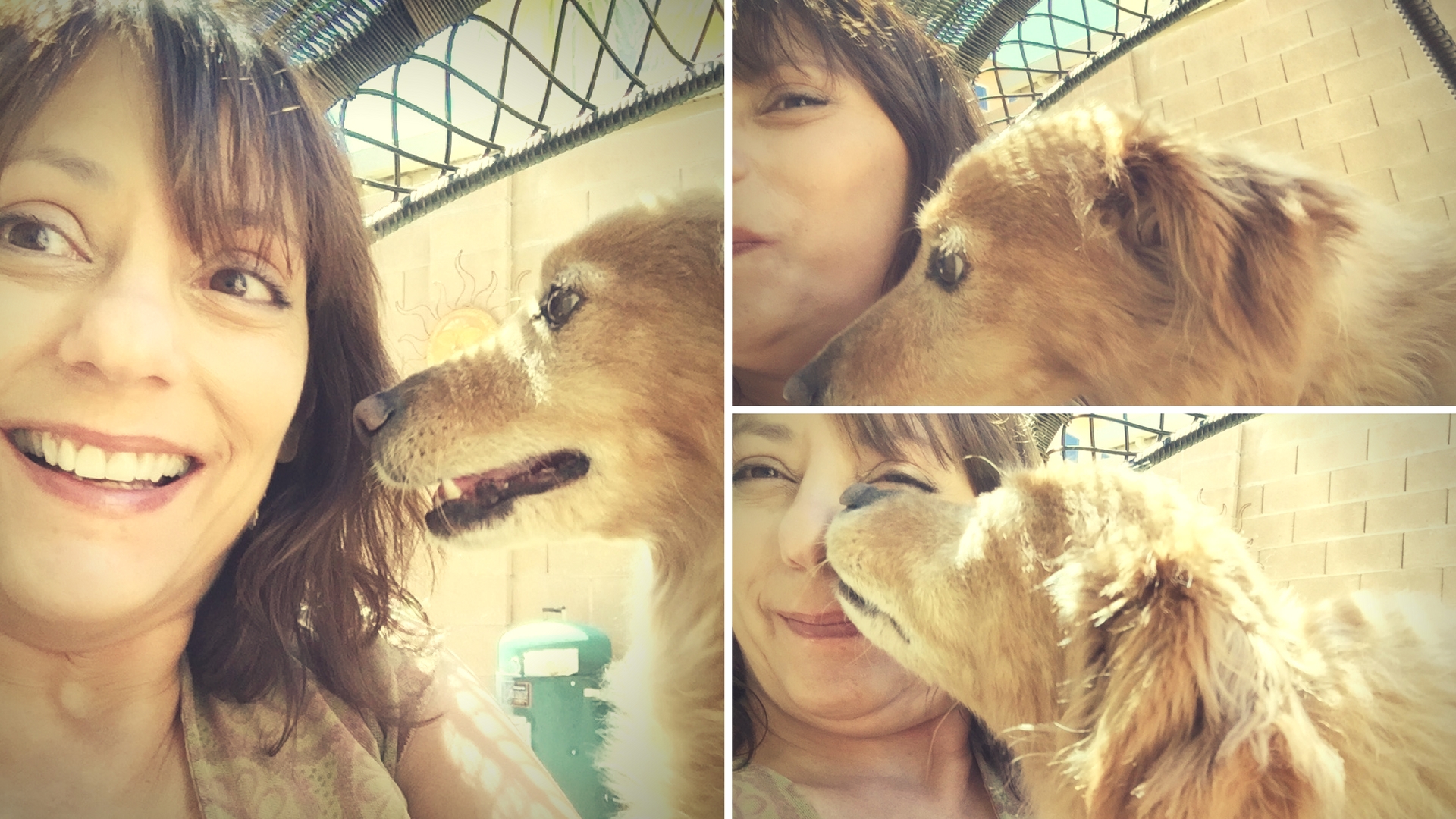Intuitive eating is gaining traction as an alternative to all the diet noise out there. By helping you learn to trust your body, this approach is a powerful way to heal your relationship with food. Wondering how to start intuitive eating? Here are some tips.
If you are not sure what intuitive eating is all about, check out this foundation article: What Is Intuitive Eating and Why Is It Important?

First things first: Is intuitive eating right for you?
In short – yes! Because intuitive eating makes you the expert of your own body and your own experience, it works for a wide variety of circumstances. (Read: pretty much everyone.)
However, because intuitive eating is so individualized, it does not look the same for everyone. For example, if you have lactose intolerance and you eat ice cream, then you will end up with an upset stomach. In that case, although intuitive eating says that there are no “good” or “bad” foods, dairy is obviously not a food group that you’ll be able to tolerate. As you tune in to your body after eating ice cream, that stomachache lets you know that ice cream is a food that doesn’t treat you well.
Diet Culture Gets in the Way
Sounds great right? But maybe you can’t wrap your head around the idea of eating what you want, how much you want, when you want. And maybe in the back of your mind, you are hanging on to the idea of dieting – of finding the one perfect diet that will work long term. If that’s the case, you’re not alone! Diet culture is so widespread that stepping out of it is like swimming upstream.
Plus the desire to lose weight is strong! I can tell you that losing weight will not change you you are as a person; that confidence and self-esteem can improve at any weight; and that you cannot tell anything about someone’s health by their body size. However, that doesn’t change the alluring cultural messages that [falsely] claim otherwise.
Truth be told, it is typically easier to navigate through life in a smaller body. That isn’t a universal Truth, but the result of our current cultural beliefs that thin = good. So it’s no wonder that the weight loss industry has current revenue of $66 billion a year. Despite that, there are still no documented long-term success rates with any specific weight loss plan. (In fact, the majority of people who deliberately lose weight regain it all plus some!)
Bottom line: the way to feel better about your body and heal your relationship with food, cannot come from diets focused on external eating rules, even when they’re dressed up as “lifestyle changes.”
If you’re wavering on whether or not to start intuitive eating, grab a notebook and pen:
- Think about all the diets, eating plans, and weight loss plans you have tried. List out the positive outcomes, except for weight loss. Did you feel more confident? More in control? What else was a positive for you? Next, think about those positive things. How long did they last? If they didn’t last, what do you attribute that to?
- Now list the negative outcomes of all the diets, eating plans, and weight loss plans you have tried. For example, did episodes of overeating increase? Did you have less energy than usual? Did you avoid parties or other social events to avoid tempting foods?
- Now, let’s finally talk about weight. Did the diets result in as much weight loss as you hoped? Were you able to maintain the eating plan over the long term? For any weight loss you experienced, how long did it last? Did you regain some of the weight? All of it?
Based on what you just discovered through that activity, do you want to try yet another diet? Or do you desire to shift to something totally different?
How to start intuitive eating
1. Start right now.
You can start implementing the intuitive eating principles at your next meal or snack. Because it’s about tuning in to yourself and being free of diet-y rules, there’s no official start date. While diets always start “tomorrow,” intuitive eating can start right now. Days are not chalked up as successful or not, depending on whether you do intuitive eating “well enough.” Intuitive eating is the antithesis of perfectionistic, all-or-nothing thinking. Everything is a learning opportunity, a chance to check in with yourself.

2. Check in with your hunger.
This is one of the most well-known tenets of intuitive eating: eat when you’re hungry, stop when you’re full.
This is also where too many people stop. And that’s how intuitive eating gets turned into the hungry-full diet. Assessing your level of hunger is a crucial piece of intuitive eating, but it is just one part of the whole.
Check in with your hunger before, during, and after a meal. Imagine a scale from one to ten. One is ravenously hungry, five is neutral and ten is overstuffed to discomfort. Besides assigning a number value to your physical hunger, pay attention to other bodily sensations such as alertness and energy. Observe how your body and mind react to different foods and different portions. It is possible that you may feel emotions such as fear when eating a “trigger” food – at least at first.
Noticing your hunger level is a very simple concept, but it takes practice! The more you have been dieting, the more practice this will take.
Remember: intuitive eating is based on principles, not rules. Even if you are not physically hungry, you are still allowed to eat!
3. Choose foods you are hungry for.
Once you’ve determined your hunger level, check in with yourself about what you’d like to eat. Do your best to make a match between what you’d like to eat and what you choose to eat.
It isn’t enough to physically fill your stomach enough to bring your fullness level up to a six or higher. Food is meant to be enjoyable – not just fuel. The entire act of eating is an experience that can enhance your life. But if you see food as merely fuel, and choose foods strictly by nutritional components, you are missing out. And ironically, you are more likely to overeat or even binge, even if you are physically full.
Eating for satisfaction is as important as eating for nutrition. A lack of satisfaction with your food choices easily leads to pantry-surfing after a meal. You can absolutely fill your stomach with foods you think you should eat. But if it isn’t what you were hungry for, you’ll still feel unsatisfied – no matter how large the meal. And that is likely “proof” that you can’t control yourself around food because, look! You just ate a huge meal but you still want to eat.
While deciding on your meal or snack, you may encounter negative thoughts. If there’s a voice in your head overruling your tastes, take a breath and let the thought pass. (More on that topic below.)
4. Challenge diet rules.
After you check in with whether you’re hungry and what you’re hungry for, it’s likely that negative thoughts will pop up. “This is bad for me.” “This will go right to my thighs.” “This is toxic.”
Where did those messages come from? Parents, teachers, coaches, friends, media and social media? Food moralizing is everywhere! And unfortunately, it backfires all too often. Putting good/bad judgments on food tends to give “naughty” foods power over you. That may not be what was intended, but it’s a common result.
What happens when a food has power over you? You feel helpless around a Hershey bar, that’s what. You’re at the mercy of a Ding Dong. You end up snarfing down a box of snack cakes. While sitting in your dark closet. On a pile of laundry.
Food tastes much better without a side order of “I shouldn’t be eating this.”
It can be very helpful to write down any of those negative thoughts. When you write them down, it makes it easier to notice patterns. For each thought, examine it to see what judgment is contained in it. Then rewrite the statement in a more neutral, curious way. For example, “I can’t control myself with food in the evening,” might become “I notice that when I don’t eat a satisfying dinner, I’m more likely to eat chips while watching TV.”
5. Do some advance planning.
For sure, intuitive eating is about noticing your current needs and wants. However, it isn’t very realistic – and can be stressful – to wait until mealtime to figure out exactly what to eat. (Multiply that times a zillion if you have a family to provide meals for.) There are many ways that meal planning can help. But this is different than the kind of meal prepping that goes with diet-territory. You are always welcome to change things up last minute. This is meal planning with an attitude of flexibility, not rigidity.
Meal planning is great to make sure you have adequate groceries in your kitchen, and to have ideas for meals when family members (or yourself) get hangry. It can also give a sense of comfort as you transition from diet culture to intuitive eating. Going from the land of being told what, when, and how much to eat (diets) to having infinite flexibility (intuitive eating) can be really scary at first. So meal planning can act like training wheels until you’re more confident that you can tolerate more gray area.
If you have difficulty identifying your physical cues of hunger and fullness, meal planning is also helpful. It is very common for long-term dieters to lose touch with their body’s cues. After all, much of dieting involves invoking willpower to overcome your body’s signals. So providing yourself some basic structure with mealtimes and menus will help reconnect you with your body’s cues. Again, this is flexible. If you find that you need to adjust the timing or menu item, it it okay.
Advance planning can also be as simple as carrying snacks with you, or keeping some in your office desk. Remember the hunger scale? Level three is a great place to have a meal. Level three means being solidly hungry, but not so much so that you’re shaky or have a headache. Having snacks available prevents you from waiting too long before eating. When you get to a level two or one on the hunger scale, it sets you up to overeat at your next meal. And not only overeat, but be especially hungry for sugary and fatty foods. Remember, aside from medical conditions, no foods are off-limits with intuitive eating. But getting too hungry takes you out of the position of being “in charge” of your eating. Being overly hungry means your body will likely override your conscious choices.
Ultimately, intuitive eating is about self-compassion, curiosity, and experimentation. It is about being open to your body’s wisdom, and understanding that your body may need different things from day to day. No diet plan can know what you are feeling on a day-to-day basis. Equate this to sleeping. If you sleep longer than average one night, do you beat yourself up? (Assuming you did not sleep through an important meeting.) Probably not. You’re more likely to think something like, “I guess I really needed that extra sleep.” The same goes for eating.






